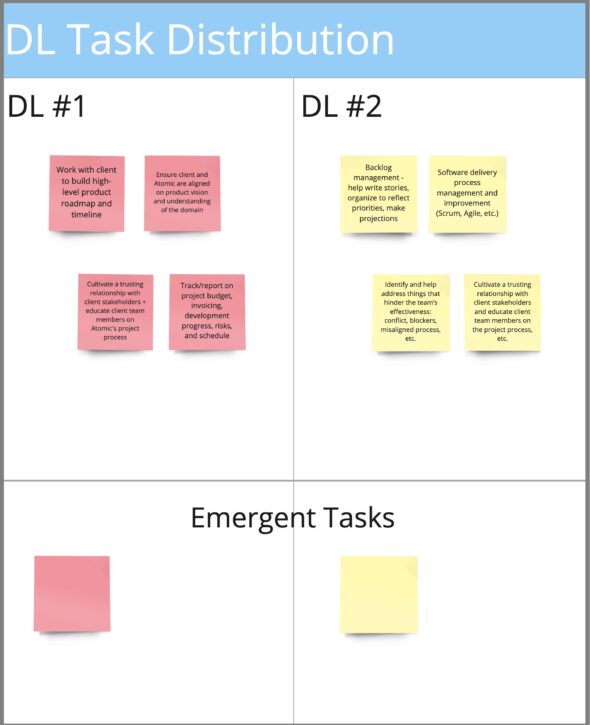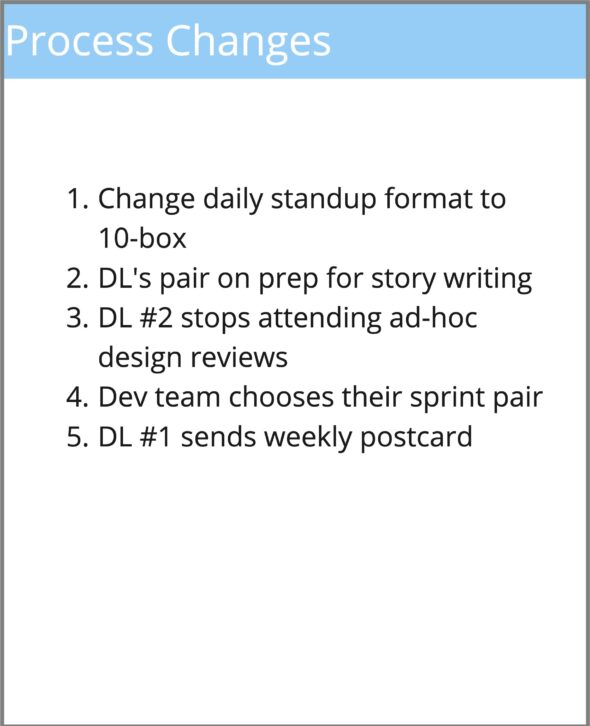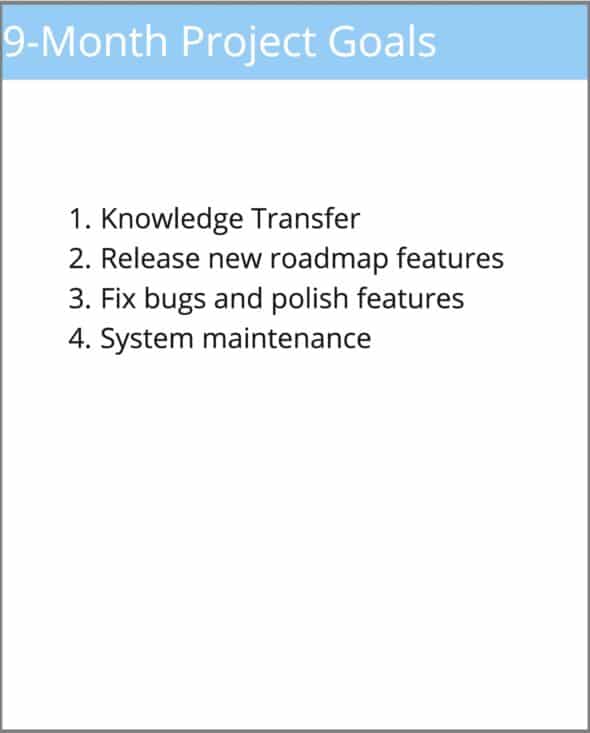At Atomic, the size of a project team can expand and constrict according to our client’s budget and/or timeline. When the need for scaling teams arises, we’ve learned to act quickly. Sometimes we only have a few days to adjust the team size. So, our teams must be able to scale quickly while minimizing any negative impact on the project goals.
Here’ss a simple but effective tool I recently used on a project. In this case, we needed to reduce the number of billable Delivery Lead (DL) hours, but it could be applied to any role. Below is how my co-DL and I approached it and some examples from our discussion.
Re-align on project goals.
A reduction in project resources usually means tradeoffs. Since we were about to make some critical decisions that would affect the project, my co-DL and I decided to start the process by re-aligning our project goals. Fortunately, our project goals were handy and still relevant. Early on in the project, our team completed a workshop where we created our own Project Charter. We pulled out the goals from that workshop and kept them front and center for this team scaling exercise.
Identify core responsibilities.
The next step was to identify the core responsibilities of the Delivery Lead role and then distribute those responsibilities among the existing team members strategically and efficiently. We each spent 10 minutes brainstorming all the tasks that each of us did in two weeks. We used calendars, email, Slack, and various Kanban boards to refresh our memory so that nothing major was lost.
In addition, we took time to list emergent tasks that we wished we had the resources to do on this project.
By clearly understanding the essential aspects of the role, we could proceed with the distribution process more effectively.

Redistribute and delegate responsibilities strategically.
Once we clearly understood the core DL tasks and some that were becoming prominent, we divvied them up. Together, we assigned cards that clearly supported the project goals to each co-DL. Emergent tasks that needed to be assigned went into their section. These tasks would be discussed and assigned to another team member later.
Some cards from the brainstorming session had to be discarded because we could no longer continue doing them.

Identify and plan for process changes.
Right-sizing a project team can present opportunities for process changes. We decided to take this opportunity to optimize existing processes and introduce new ones.
Once we redistributed the DL tasks, we looked at each task and asked, “What must be in place for this task to happen?” Here are some examples of what we came up with.

The Results
Using this tool, we quickly devised a plan to scale our team and reduce the number of billable delivery lead hours without compromising project success. The redistribution of responsibilities allowed us to leverage our skills and capabilities. It also allowed us to stop doing tasks that did not support the project goals.
Right-sizing Teams for Success
The ability to scale teams quickly and effectively is essential for meeting client expectations and achieving project success. Using this simple team scaling tool, my co-DL and I successfully navigated the challenge of reducing billable delivery lead hours while maintaining project quality.
This approach can be adapted to various roles within a project, ensuring that teams can adjust and optimize their efforts to align with budgetary and timeline constraints.


